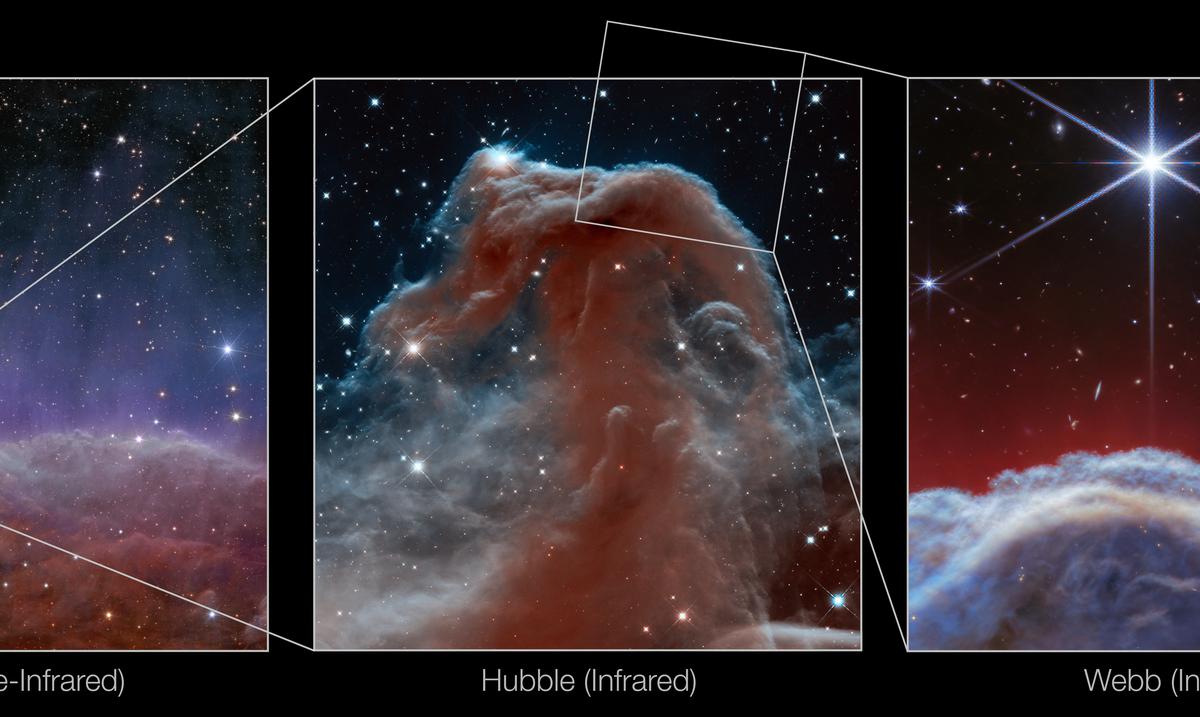The James Webb Space Telescope has captured images of the iconic Horsehead Nebula – a cold cloud of gas located about 1,300 light years from Earth – with an unprecedented level of detail and resolution.
The observations showed a part of that nebula in a totally new light that has allowed us to capture all its complexity, NASA and the European Space Agency (ESA), responsible together with the Canadian agency (CSA) for the telescope, reported this Monday.
The “Horsehead” nebula, also known as Barnard 33, emerged from turbulent waves of dust and gas, and was formed from the collapse of an interstellar cloud of material, space agencies have explained, detailing that it shines because It is illuminated by a nearby hot star.
The gas clouds surrounding that nebula have already dissipated, but the protruding pillar is made up of thick clumps of material that is more difficult to erode, and astronomers estimate that it has about five million years left before disintegrating.
The nebula is in a “photodissociation” region, in which ultraviolet light from young, massive stars creates a warm, neutral zone of gas and dust between the fully ionized gas surrounding the massive stars and the clouds in which they are located. They are born.
This ultraviolet radiation greatly influences the gas chemistry of these regions and acts as the most important source of heat, according to the same sources.
These regions occur where interstellar gas is dense enough to remain neutral, but not dense enough to prevent the penetration of far-ultraviolet light from massive stars.
The light emitted by this “photodissociation” constitutes a unique tool to study the physical and chemical processes that drive the evolution of interstellar matter throughout the Universe, from the beginning of star formation to the present.
Due to its proximity and geometry, the Horsehead Nebula is an ideal target for astronomers to study the physical structures of such regions and the evolution of the chemical characteristics of gas and dust in their respective environments, as well as as the transition regions between them.
According to the space agencies involved in the James Webb Telescope, it is considered one of the best objects in the sky for studying how radiation interacts with interstellar matter.
From now on, the researchers intend to study the spectroscopic data that have been obtained from the nebula to demonstrate the evolution of the physical and chemical properties of the material observed through the nebula.
1 / 10 | NASA reveals stunning images from the James Webb Space Telescope. The James Webb Space Telescope has produced the sharpest and deepest infrared image of the distant universe. It is known as “Webb's First Deep Field.” – NASA, ESA, CSA, STScI

